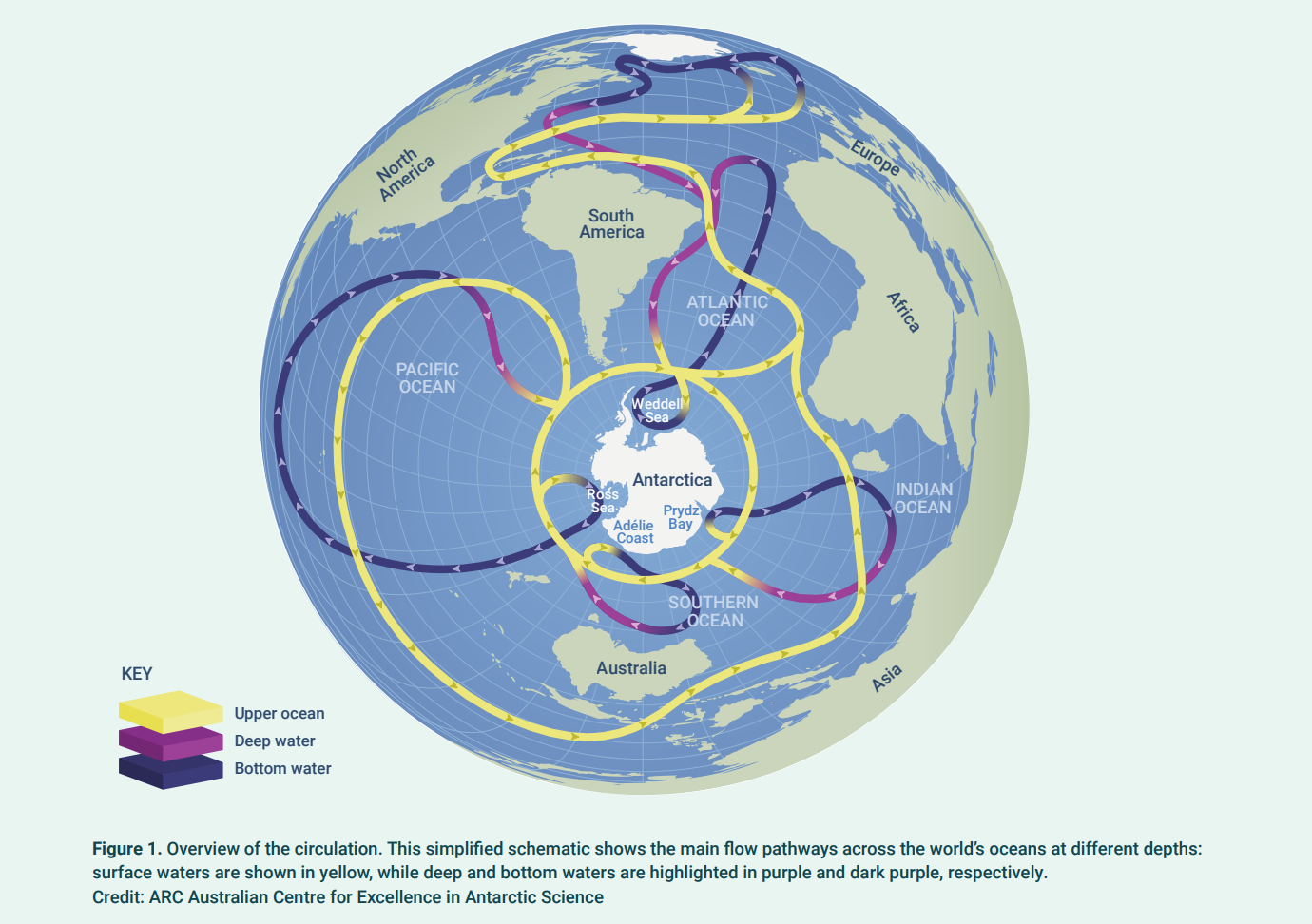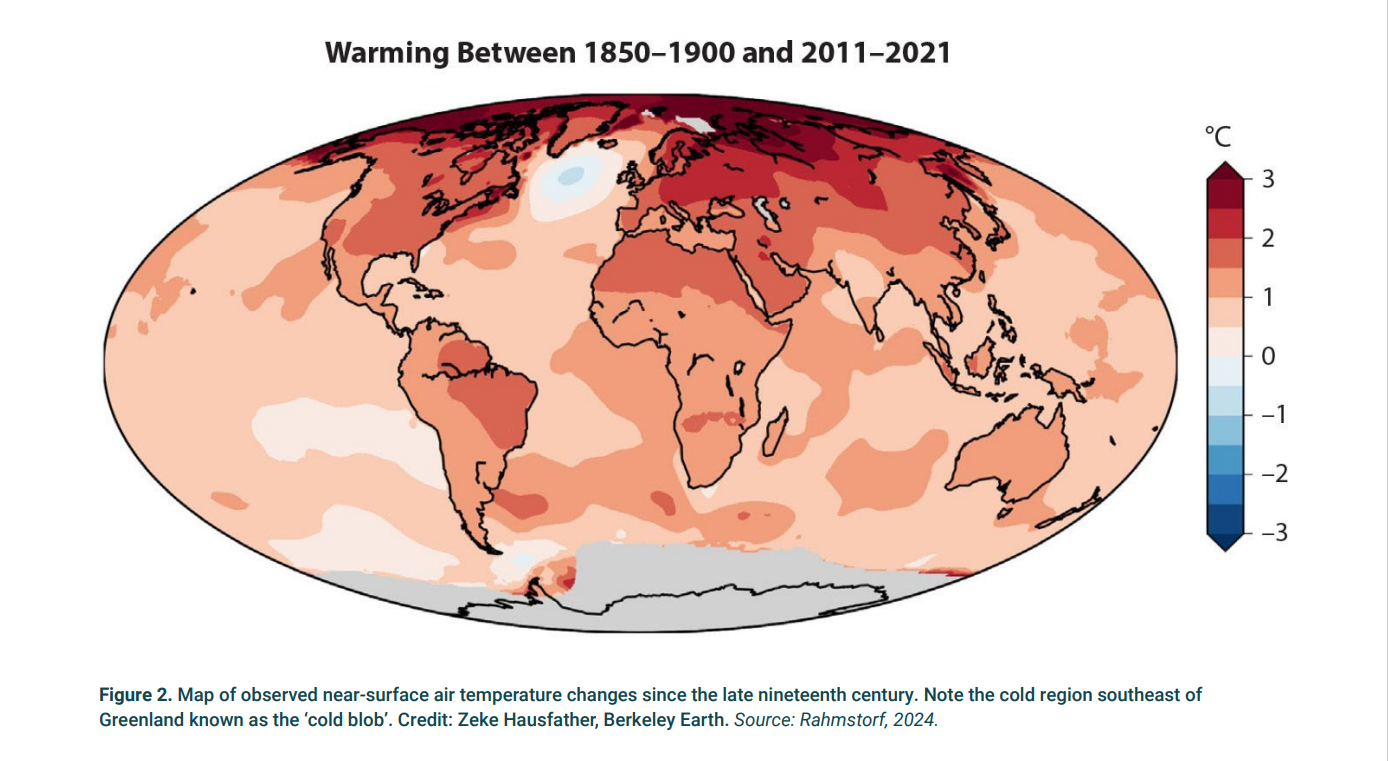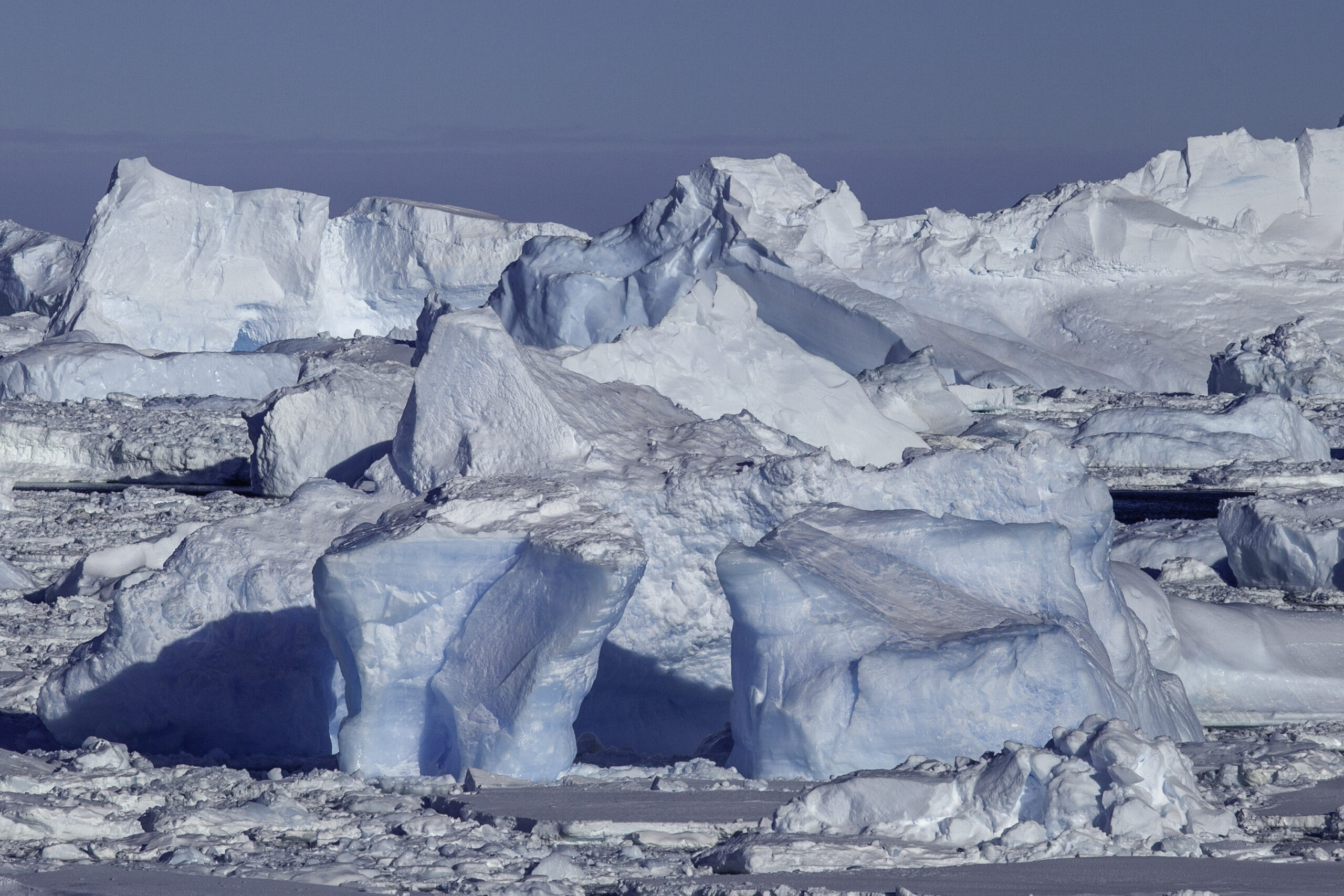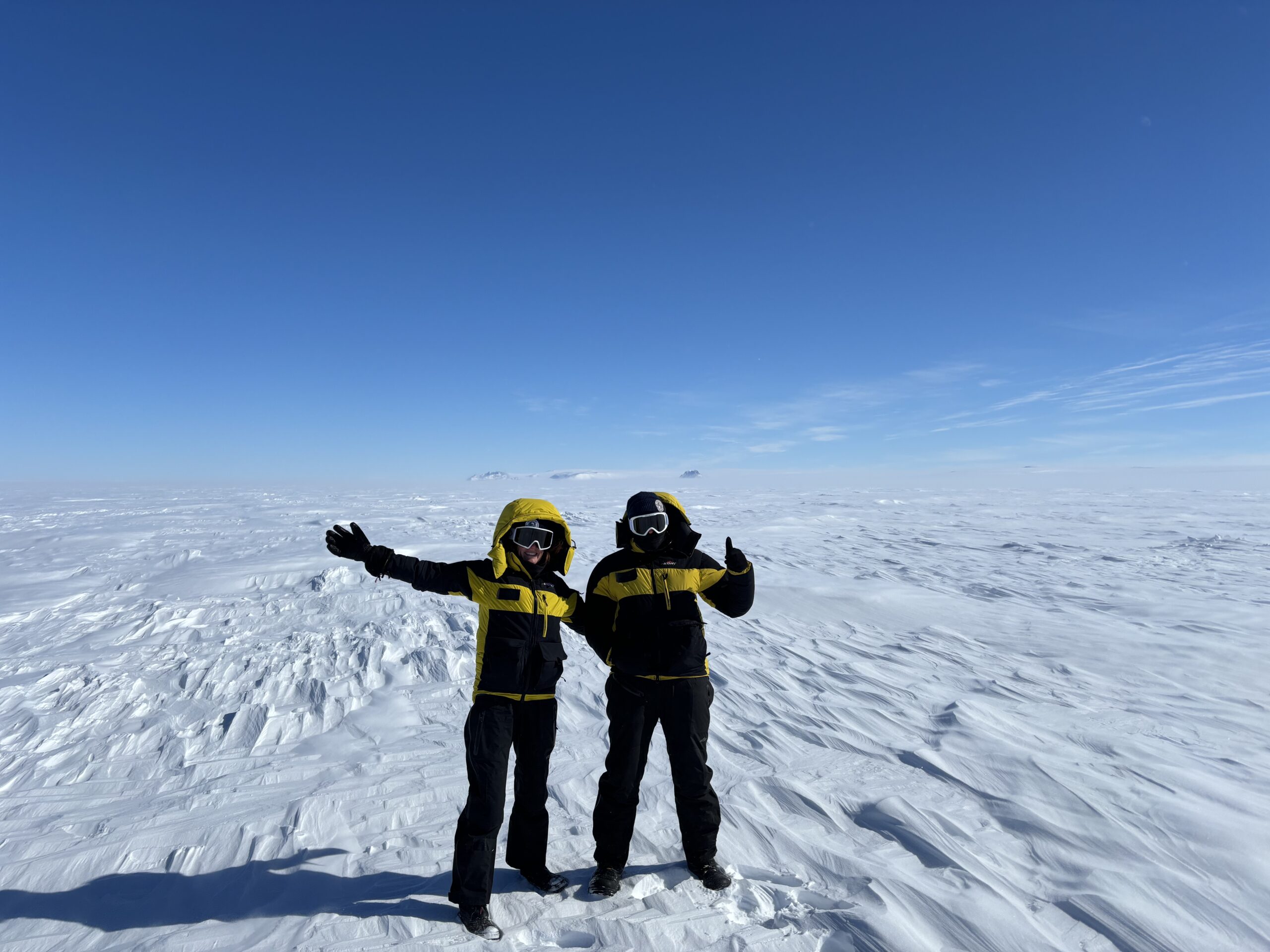
New ACEAS Explainer highlights risks of slowing global ocean overturning circulation
The Australian Centre for Excellence in Antarctic Science (ACEAS) today published a new Explainer on the Meridional Overturning Circulation (MOC) – a vast system of ocean currents that underpins Earth’s climate and ocean health.
Often described as the ocean’s ‘conveyor belt’, the MOC moves vast quantities of heat, carbon, oxygen and nutrients around the globe. In the North Atlantic the MOC helps keep Western Europe mild. Globally, the Antarctic and Atlantic MOCs support fisheries and control weather patterns. But this critical system of currents is weakening.
“This is a wake-up call,” said author and ACEAS Deputy Director, Professor Matthew England (UNSW). “The evidence shows us clearly that the MOC has slowed down, and if this trend continues the impacts on human societies, climate and ecosystems will be profound.”

What does the Explainer contain?
The Explainer details:
- how the MOC works, including its Atlantic and Antarctic branches
- evidence of modern-day changes, such as the North Atlantic ‘cold blob’ and abyssal ocean warming
- future scenarios, including the risk of a shutdown
- potential impacts on climate, biodiversity and human security.
What is driving changes to the MOC?
Climate change and melting ice sheets in Antarctica and Greenland are adding freshwater to key regions, disrupting the formation of dense water that powers the overturning circulation. Observations and models both show the MOC has already slowed and could weaken by nearly 50 per cent this century if emissions remain high.
Why does this matter?
A weakened MOC would alter global heat distribution, shift rainfall belts, and disrupt marine ecosystems. Western Europe could experience regional cooling and heightened weather extremes, while tropical regions could experience major changes in rainfall. Fisheries that depend on nutrient‑rich upwelling would be adversely impacted, threatening food security and livelihoods worldwide.

Signs of slowdown
The Explainer also highlights signs of a recent slowdown, including the North Atlantic ‘cold blob’ – a patch of unusually cool water that signals reduced ocean heat transport. In the Southern Ocean, freshening and warming of deep waters point to declining Antarctic Bottom Water formation, a process critical for ventilating the ocean abyss.
ACEAS Director and co‑author Professor Matt King (UTAS) said: “Antarctica and the Southern Ocean are central to this story. If society is going to adapt in time to what is incredibly rapid change, we need the latest information in the hands of policy experts and decision makers.”
ACEAS’s Explainer series bridges science with decision making – a key component of its mission to help communities prepare for the climate risks emerging from East Antarctica and the Southern Ocean.
Read the MOC Explainer
Read the MOC Explainer here.
Explore our Explainer series
Explore our Explainer series here.
Stay connected
Sign up to receive our Policy Briefings and Explainers direct to your inbox.

